The mass distribution of liquid cooling systems is hampered not only by the fear of leaks, but also by the price. For a heaped ready-to-install set of a water block, a pump and a 360-mm copper radiator, you will have to pay at least 20 thousand rubles. Not everyone is ready for such expenses, especially since a good air cooler will be able to cool a top-end 10-core processor well without serious overclocking. Therefore, “budgetary” liquid cooling systems appear on the market. Let’s see what they can do with the MSI MAG Core Liquid 280R from the MSI Arsenal Gaming series.
Specifications
- Supported platforms: Intel LGA 1150/1151/1155/1156/1200/1366/2011/2066, AMD AM2 (+) / AM3 (+) / AM4 / FM1 / FM2 (+).
- Waterblock base material: copper.
- Waterblock dimensions: 81 × 67 × 49 mm.
- Radiator dimensions: 312 × 140 × 27 mm.
- Max. Processor TDP: 180 W.
- Hose length: 400 mm.
- Heatsink material: aluminum.
- Fan: 2 pcs 140x140x25 mm, 2800 rpm, 84.4 cubic feet per minute, 0.19 A, ARGB-backlight.
- Max. fan noise level (one): 33 dBA.
- Pump impeller rotation speed: 4200 rpm.
- Pump power: 4 W.
The price at the time of publication of the material is 11,000 rubles.
Completion, appearance
The box is small, made of thick cardboard.
All accessories for mounting the water block on the processor fit in one package. All mechanically loaded parts are made of metal, which pleases. All current processor connectors are supported, except perhaps the TR4 socket. Which is logical: a budget solution cannot cope with such a powerful heat source.
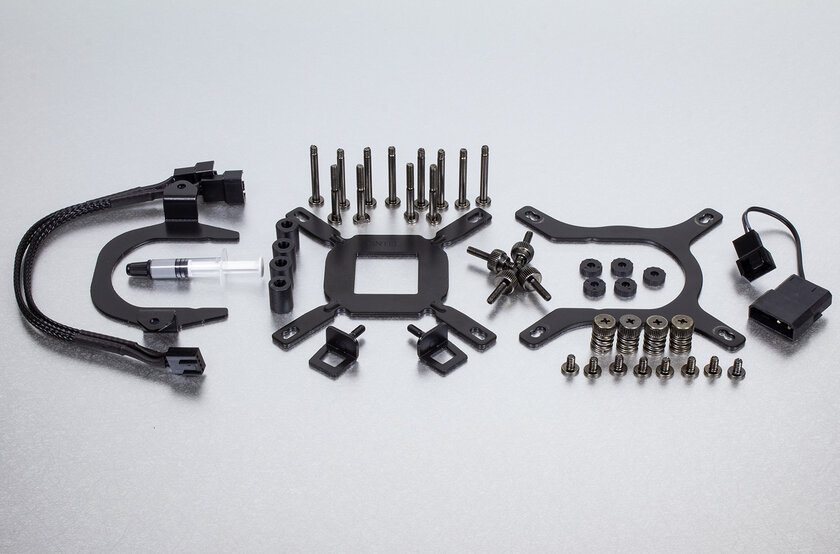
The radiator and the water block are connected by rather rigid fabric-braided tubes about 400 mm long. The radiator is designed for installation of 140 mm fans, thickness 25 mm.
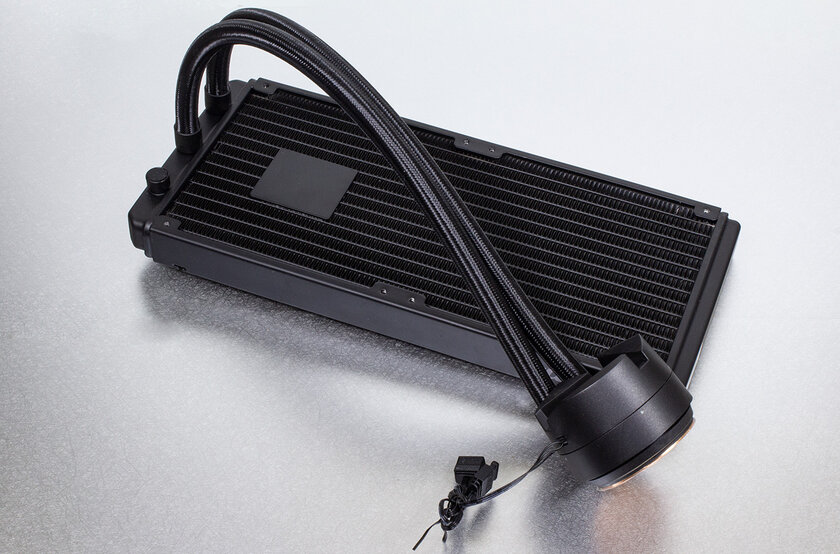
Includes a pair of 140mm nine-blade fans labeled APA1425M12. The fans have built-in addressable RGB backlighting connected with a separate cable.
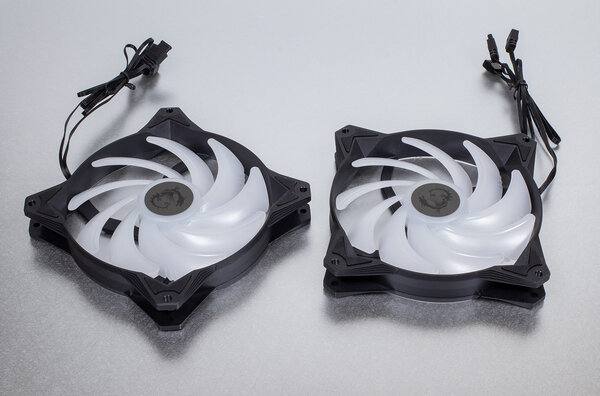
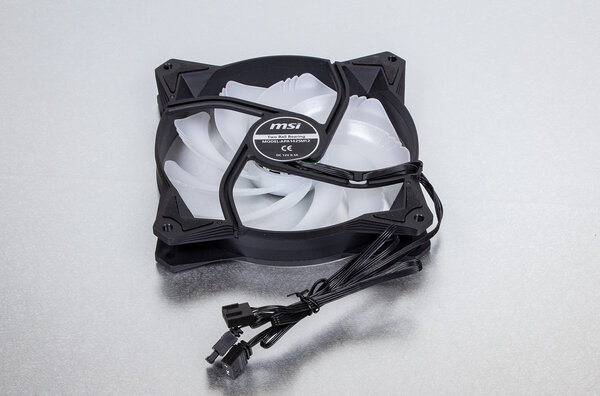
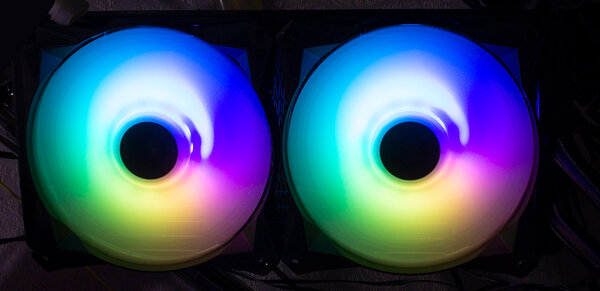
The fan casings are equipped with additional elastic inserts to prevent vibration transmission to the radiator.
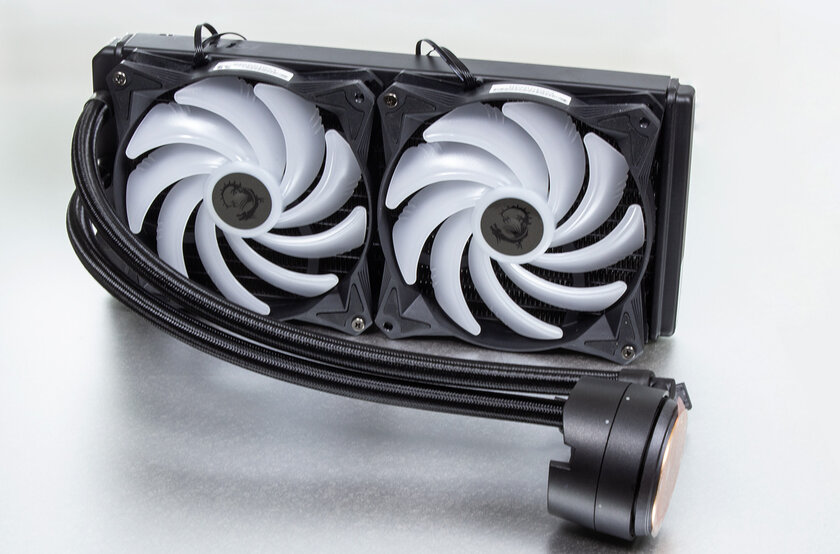
The water block looks like similar solutions from other brands: a copper base, a small internal volume, curly cutouts, a company logo with ARGB backlighting. The top cover rotates for correct orientation of the logo in space. The base is well finished, but there is no “mirror”. Considering the contact area with the lid on the processor, this class is sufficient.
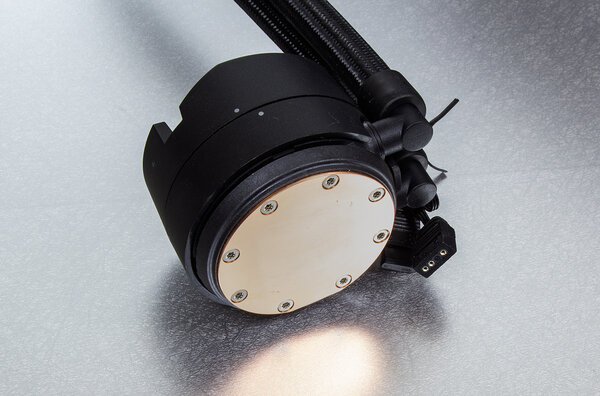
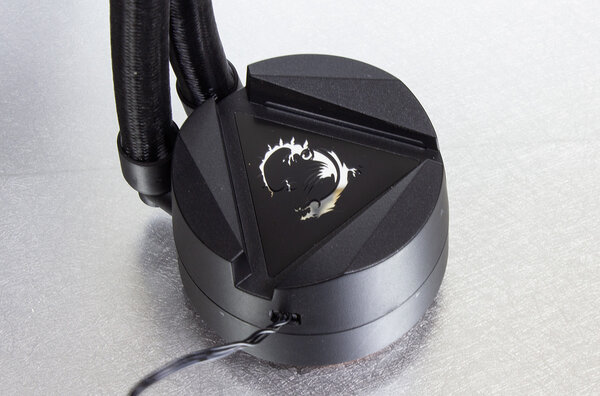
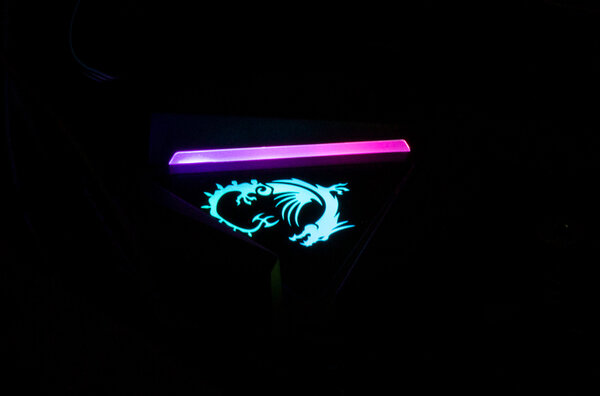
However, there is a significant difference: the pump has been moved to the radiator. The manufacturer explains this decision by the desire to extend the life of the motor and reduce the noise level. The increase in service life is due to the distance from heat sources. Indeed, the refrigerant circulating in the radiator is colder than in the contact zone with the copper base.
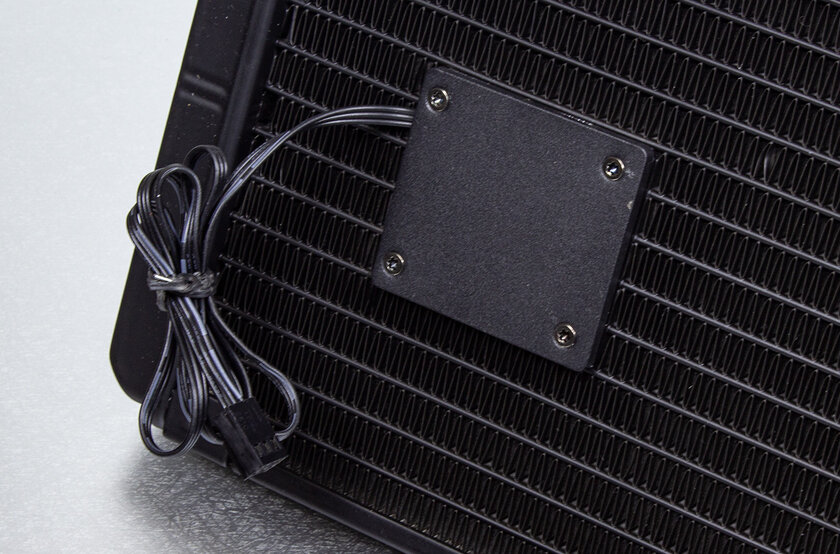
A well thought-out fastening system does not cause problems during installation. The use of springs allows the mechanical force to be evenly distributed over the four corners of the plate. The plates themselves are attached to the round water block with one hand movement. Plastic washers protect the screws from falling out.
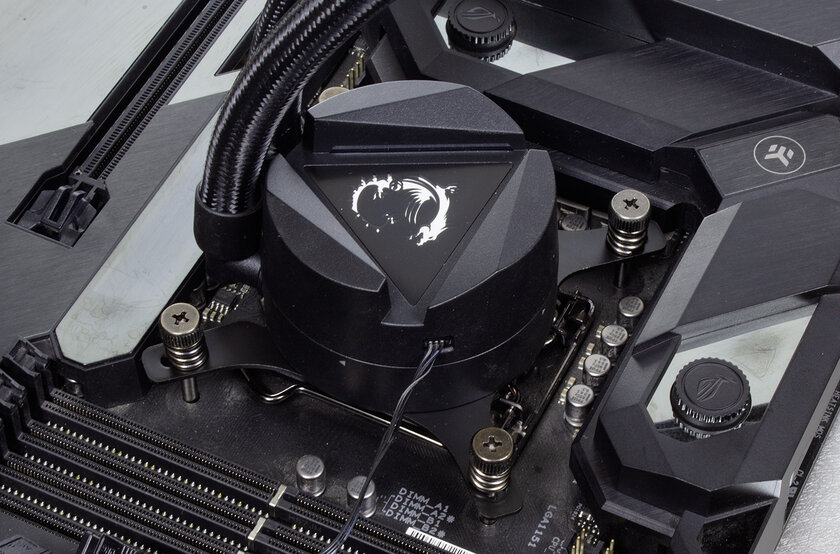
Test results
To test the performance, I took a ROG Maximus XI Formula motherboard and an Intel Core i9-9900K processor. To warm up, we used a stress test built into the Prime95 utility (Small FFTs profile using L1 and L2 caches) with AVX instructions involved. During the test, the fan speed was controlled manually, the pump impeller speed was set to maximum. The room temperature was 23 degrees Celsius.
The first series of tests was carried out at 4.8 GHz and a processor voltage of 1.2 volts. When running Prime95, the processor consumed a maximum of 225 watts, and the MAG Core Liquid 280R was struggling to dissipate that much heat. It is noteworthy that the radiator was barely warm, whereas usually, with an excess of the allocated power, it is the radiator that is “plugged” first, which can be understood by its even strong heating.
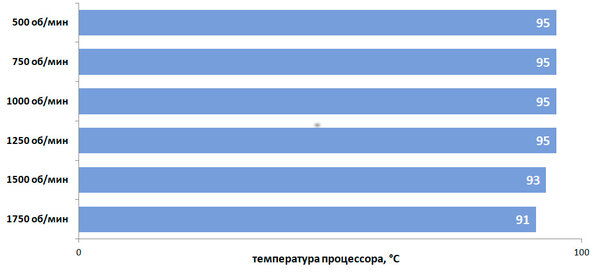
If you lower the frequency by 200 MHz and the voltage to 1.17 V, then the power consumption of the processor under load drops to about 150 watts. Here MAG Core Liquid 280R coped without any problems, you can even slightly lower the rotation speed of the already quiet fans, without bringing the processor cores to over 90 degrees.
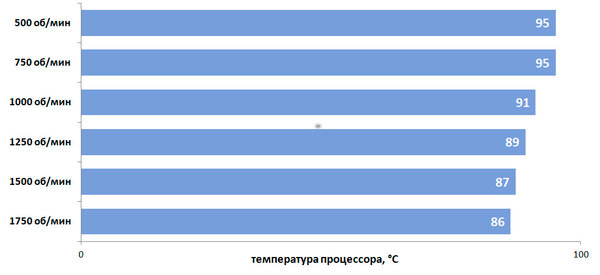
In idle time, one of the fans can be safely turned off, and the pump rotation speed can be reduced to 3000 rpm. This will slightly increase the resource of the mechanics and make the system a little quieter.
Review
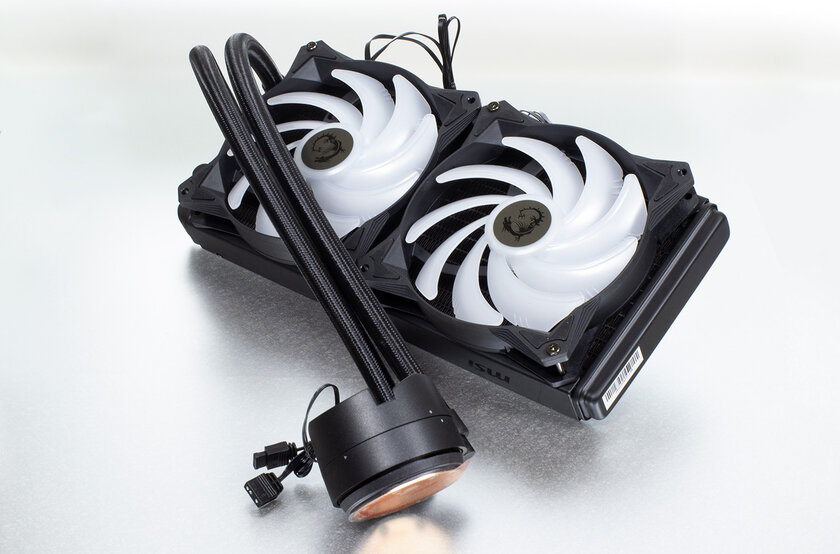
The MSI MAG Core Liquid 280R liquid cooling system will be of interest primarily to those who, when buying a productive processor, are not going to dabble in overclocking, but at the same time want silence and beauty. All this is in the tested product. Ease of installation and a secure mounting system can also be added. The disadvantage is that the hoses are too rigid and short; in tight cases and installing a radiator on the front panel of the case, it may be difficult to lay them. The price of 11 thousand rubles at the time of publication is adequate against the background of competitors.
pros
- Quiet fans.
- Reasonable price.
- Simple and reliable fastening system.
- Addressable RGB lighting.
May not like
- Rigid hoses.
Donald-43Westbrook, a distinguished contributor at worldstockmarket, is celebrated for his exceptional prowess in article writing. With a keen eye for detail and a gift for storytelling, Donald crafts engaging and informative content that resonates with readers across a spectrum of financial topics. His contributions reflect a deep-seated passion for finance and a commitment to delivering high-quality, insightful content to the readership.







